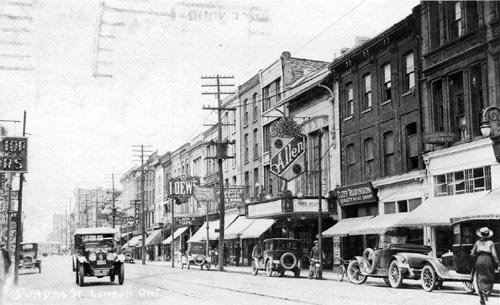

 |
 Many London businesses and industries benefited from the prosperity of the 1920s. Both London Life and Canada Trust, still known as the Huron and Erie, built new head offices which are still impressive buildings today. Several of the city's largest industries entered into industry-wide amalgamations. McClary's joined General Steel Wares, and McCormick's and Perrin's became part of Canada Biscuit. In some cases, amalgamations brought about the closing of a plant as in the case of Carling Breweries, bought by E. P. Taylor's Brewing Corporation of Canada. Many London businesses and industries benefited from the prosperity of the 1920s. Both London Life and Canada Trust, still known as the Huron and Erie, built new head offices which are still impressive buildings today. Several of the city's largest industries entered into industry-wide amalgamations. McClary's joined General Steel Wares, and McCormick's and Perrin's became part of Canada Biscuit. In some cases, amalgamations brought about the closing of a plant as in the case of Carling Breweries, bought by E. P. Taylor's Brewing Corporation of Canada.
The car came to London for good in the 1920s, creating many new business opportunities. J. Gordon Thompson and James D. Good started Supertest, a chain of service stations that totaled 1100 by 1971. A short-lived attempt to actually build cars in London resulted in the production of about 100 London Six sedans and touring cars in a plant on King Street.
One of London's great moments in history came on October 31, 1920 when a struggling general practitioner and part-time Medical School lecturer, Frederick Banting, conceived an idea which would later give the world insulin.
The London and Port Stanley Railway (L&PS) was electrified in 1915, and began carrying many thousands of Londoners to the beach where the L&PS built a beach house with a cafeteria and, later, a huge pavilion. Electrification brought about a revolution in the home and created both a market and an industry for appliance and light bulb manufacturing.
The worst crisis of the decade was probably the 1937 flood, which caused
millions of dollars in property damage especially in West London. This flood
was a key event leading to the establishment of conservation authorities in
the province to protect people and property from future floods. The Upper
Thames River CA, established in 1947, built Fanshawe Dam on the edge of
London between 1950 and 1953.
|
 |
|